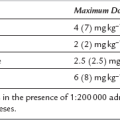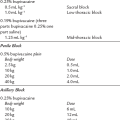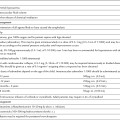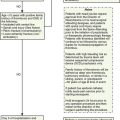
Ever ask yourself why some recoveries stretch on long after the initial diagnosis? It’s not just about medical unpredictability—it’s about the intersection of evolving conditions, patient psychology, and real-world logistics. Countless patients who appeared on track for swift recovery find themselves navigating complex claims—scenarios where evolving care needs and changing timelines demand flexible, adaptive management.
This isn’t rare. It’s the reality of healthcare—one that clinicians, insurers, and care managers face daily. Once you understand why this happens, you can move from reactive fixes to proactive strategies.
When Medicine Throws Curveballs
Treatment plans begin with timelines: X-ray shows healing, surgery addresses the issue, medication takes effect. But human biology doesn’t always follow the forecast. Complications can arise weeks or months later—think post-surgical infections, nerve irritations, and joint stiffness that linger far beyond expectations.
Chronic illnesses are another story entirely. Diabetes, autoimmune disorders, cardiovascular conditions—they don’t resolve; they evolve. Even cancer survivors may require years of surveillance to monitor for recurrences and manage late-emerging treatment side effects like cardiotoxicity. Then there are neurological injuries—brain trauma or spinal cord damage—where progress can plateau for months before small but meaningful improvements show up.
When the clinical picture keeps shifting, the care plan has to shift too.
Why Recovery Gets Personal
Recovery isn’t only about the body, it’s the mind. Serious medical events bring more than physical trauma. Depression, anxiety, or PTSD can follow injury or illness, complicating both recovery and reintegration. When a patient fears returning to the workplace where the accident happened, that fear isn’t irrational—it can slow progress, weaken immune response, and disrupt healing.
Add in the frustration of lost independence. Someone used to an active lifestyle may feel helpless or unmotivated—making follow-through with rehab tougher. That’s why psychological support isn’t optional—it’s essential.
The Real-World Hurdles That Extend Recovery
Sometimes, the biggest obstacles are logistical and not clinical. Living far from specialists or rehab centers creates attendance issues. Financial constraints—co-pays, travel expenses, time off work—can derail treatment schedules. Even with coverage, social safety nets don’t always cover the real costs of extended care.
Then there’s fragmentation. Patients with complex needs often see multiple specialists. Without centralized coordination, care becomes fragmented—tests are duplicated, advice conflicts, and essential follow-ups slip through the cracks. Each gap delays healing.
Care Plans That Have to Stretch and Bend
Extended recovery isn’t about more care; it’s about smarter, more adaptable care. Start with a strong, multidisciplinary framework: doctors, nurses, therapists, mental health specialists, and case managers all working in sync.
Take a simple case, say a workplace injury. Early stages may focus on physical rehab. Weeks later, emphasis shifts to psychological well-being and workplace relapse prevention. That’s where documentation matters—not just for continuity, but for handling complex claims that demand justification for extended care.
Today’s digital tools make this smarter. Telemedicine addresses access issues. Remote monitoring keeps everyone informed in real time. Shared health records keep communications flowing smoothly across care teams.
What Research Confirms
The data speaks clearly: early intervention and patient education reduce complications and cost. Patients who know what to look out for and how to respond stay on track more consistently.
Integrated care models outperform silos. When physical therapy, occupational therapy, and mental health services are coordinated, outcomes improve, and recovery is smoother.
And while faster recovery is always desirable, quality matters more. Each phase of the plan should build forward—so patients don’t regress and lose ground.
Preparing Healthcare for the New Normal
Aging populations, rising chronic disease rates, and better survival outcomes mean long-term recovery is increasingly common. Health systems must adapt—not just to treat but to support ongoing recovery.
That means investing in telehealth, training multidisciplinary teams, and building flexible recovery policies that reflect reality—not hope. For insurers, that means recognizing recovery isn’t always linear and aligning reimbursement models accordingly.
Why This Matters—for Everyone Involved
For patients, smart long-term care means regaining function and independence. For providers, it means delivering value without wasting resources. For insurers, it’s about managing complex claims proactively rather than chasing endless paperwork.
When all parties acknowledge that care often extends well beyond the initial diagnosis—and plan accordingly—everyone benefits.
Final Thoughts
Recovery isn’t a straight path. Medical setbacks, psychological strain, and logistical barriers can stretch recovery into years. But it doesn’t have to derail patients. When care is adaptable, coordinated, and patient-centered, extended recovery becomes manageable—and maybe even purposeful.
That’s not just better care—it’s sustainable healthcare.





